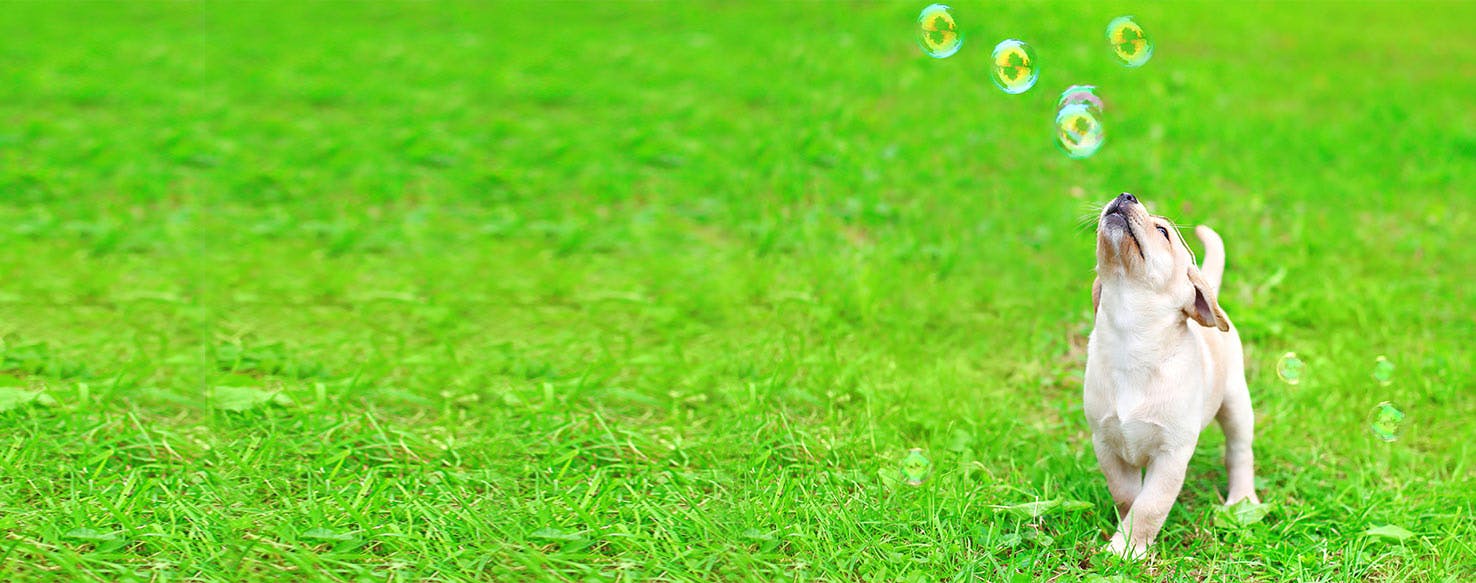- Home
- The Daily Wag!
- Behavior
- Why Do Dogs Eat Soap
Why Do Dogs Eat Soap

Unusual
Concerning
Introduction
Recently, individually packaged laundry detergents were criticized for becoming an unusual household threat. Laundry capsules are single-use detergents enclosed within a water-soluble casing. The shiny casing and attractive appearance of these bright, colorful, gooey pods had attracted the appetites of children and youth who were incredibly curious about the taste. Unfortunately, the detergents are just as poisonous as they are attractive. Soaps come in a wide variety of smells, textures, and ingredients. Humans tend to gravitate towards shampoos, bar soaps, and hand soaps with the most agreeable or desirable scent. Dogs—who are attracted to strongly-scented treats—have been known to occasionally become overly curious about soap. In some cases, this curiosity leads dogs to eat the soap; here are somethings you can do if your dog can’t stay away from soap.
The Root of the Behavior
Dogs and young puppies are especially curious about the world around them. Like human babies, when a puppy becomes curious about something that looks edible and smells good, they attempt to eat it. Dogs are slightly different than babies in that dogs are opportunistic, whereas babies will willfully attempt to get into the cookie jar. A dog must smell or encounter soap before they will attempt to eat it, and in most cases, the behavior won’t continue beyond the initial lick or two. However, puppies that are teething are likely to chew on soap for its dense yet soft texture. Teething lasts for several weeks, and in this period of time, chewing is not limited to soap, or to any one group of objects.
When dogs fall into a habit of eating non-food items, they are diagnosed with a condition called pica. In general, the condition is considered more severe, since dogs put themselves at risk for intestinal blockage when they consume non-edible or indigestible items. Eating soap qualifies as pica, although it is worth noting that most soaps are non-toxic and will have little negative repercussions for dogs that accidentally consume it. Although pica is a little-understood condition, there are several theories as to how and why it becomes a bad habit in dogs.
Despite a lack of evidence, one of the more popular ideas about pica is that it stems from an unbalanced diet. It is more likely that dogs associate the smell of the soap with something they would enjoy eating and act upon that instinct rather than a nutritional deficiency. Frustration and anxiety are other leading theories, as well as the idea that pica perhaps arises out of play. While these theories seem to have some validity to them, they do not account for the entirety of the behavior. The most likely theory is that dogs that eat strange objects incur a lot of extra attention from their owners. Attention, whether good or bad, is always a desirable thing for a dog.
Need advice about your pet's health?
Get answers fast from a veterinary professional 24/7 in the Wag! App.
Get Vet ChatEncouraging the Behavior
The easiest way to keep your dog from eating soap is to hide it or prevent your dog from having open access to it. Soaps that are particularly sweet or fragrant can attract a dog’s attention, even if it still in its wrapper or container. In some cases, the appearance of certain soaps or detergents may attract your dog’s attention as well. Once your dog begins to engage in the behavior, stopping it as soon as possible is key, before it becomes a habitual or engrained pattern of behavior. A dog that ingests soap is also more likely to ingest other non-food items. For this reason, you should consider redirecting the desire towards playing with chew toys or objects designed for play.
If your dog does develop pica, the Humane Society offers several helpful suggestions in redirecting or eliminating the behavior. There are various chemical sprays that are completely harmless to a dog’s health, but dogs find repulsive. Spraying non-food objects with these deterrents can help train your dog to avoid non-food items and reduce pica. Try not to punish your dog for eating a non-food object after a significant time has passed, as dogs will not understand why you are punishing them. Instead, startle your dog or spray them with water while they are still in the act. Then, follow up by rewarding them for eating food items.
Other Solutions and Considerations
Many soaps tend to be non-toxic, but certain types of detergents can cause chemical burns in your dog’s mouth and throat. Some are strong enough to severely damage your dog’s stomach lining. The symptoms of chemical burns or internal damage may not be immediately apparent. Watch closely to see if your dog is drooling, swollen, licking excessively, swallowing frequently, or pawing his face. More obvious symptoms include vomiting and diarrhea, while not eating is a subtler symptom of stomach problems. The most dangerous types of soaps are fabric softeners, disinfectants, sanitizers, and strong detergents. Try and completely prevent your dog from having access to these soaps, especially if they have a history of eating non-toxic soaps.
Conclusion
Soaps can look sweet and sticky in their glossy containers, reminding dogs of other sweet treats that you may occasionally sneak them. Your dog may not be interested in viral video trends, but it may be interested in what your laundry detergent capsule tastes like nonetheless. Make sure that any and all toxic threats are out of reach, and you won’t have to worry about your dog accidentally poisoning itself.
Written by a Australian Shepherd lover Jonah Erickson
Veterinary reviewed by:
Published: 03/16/2018, edited: 01/30/2020
More articles by Jonah Erickson
